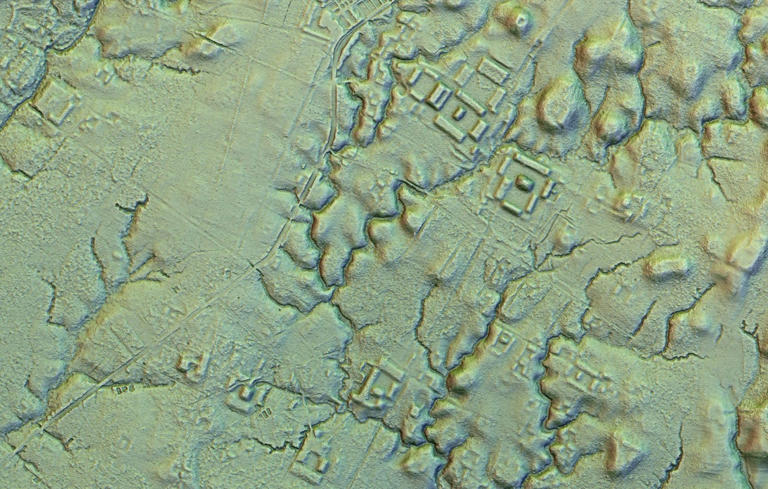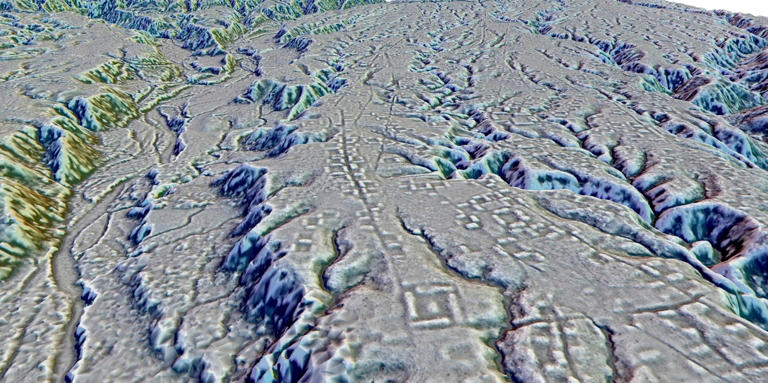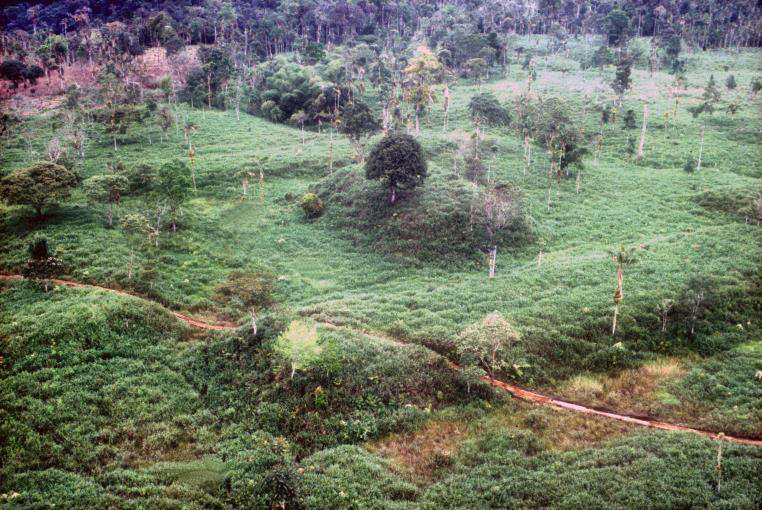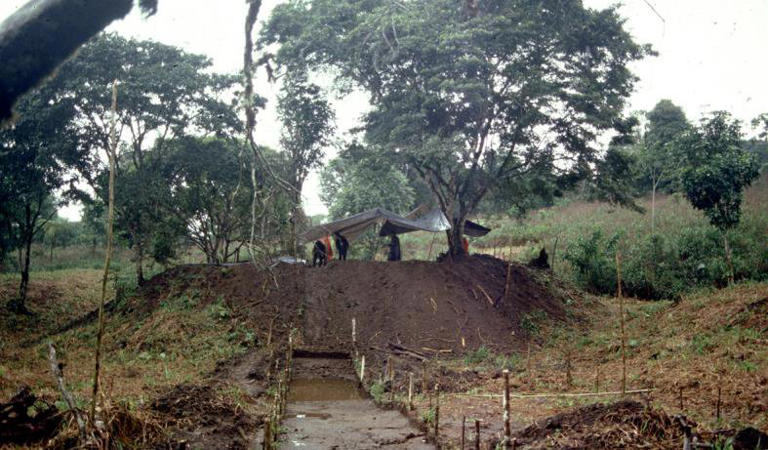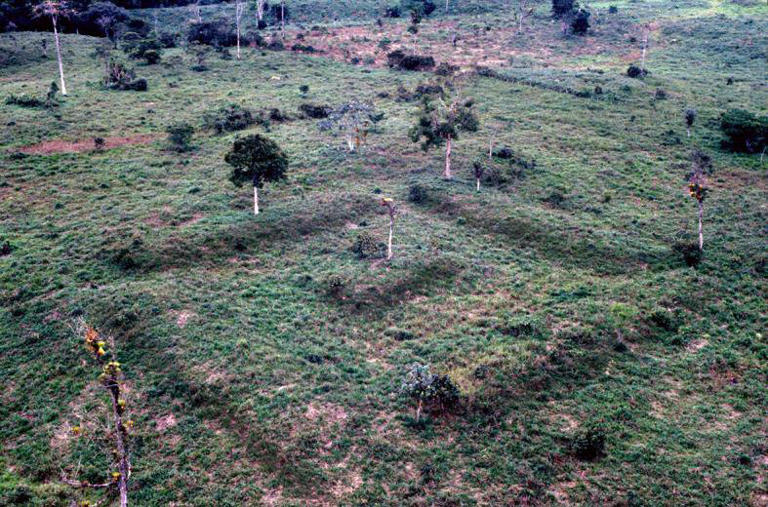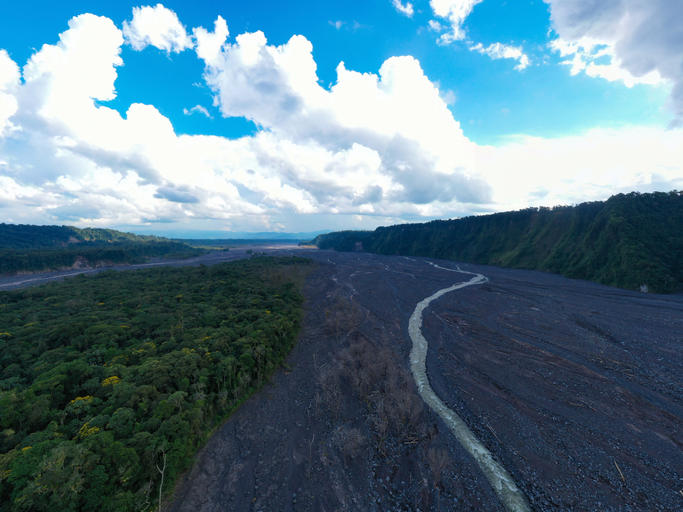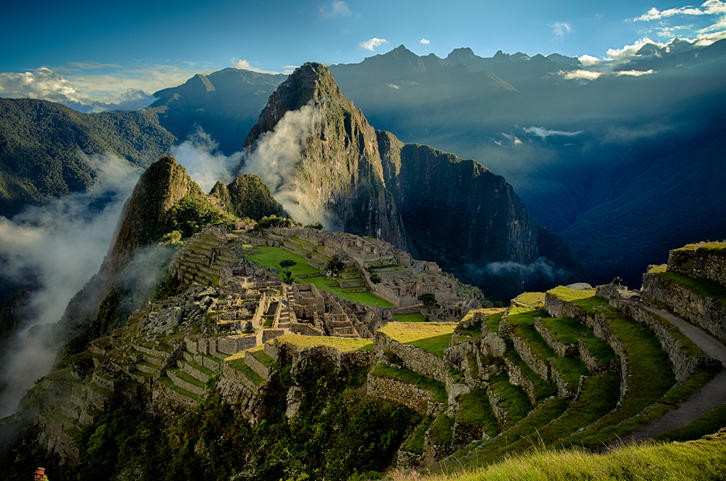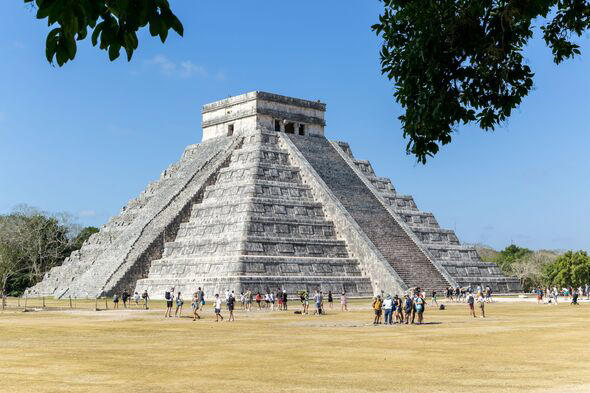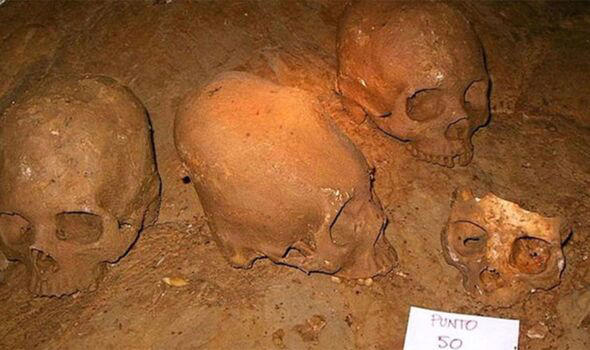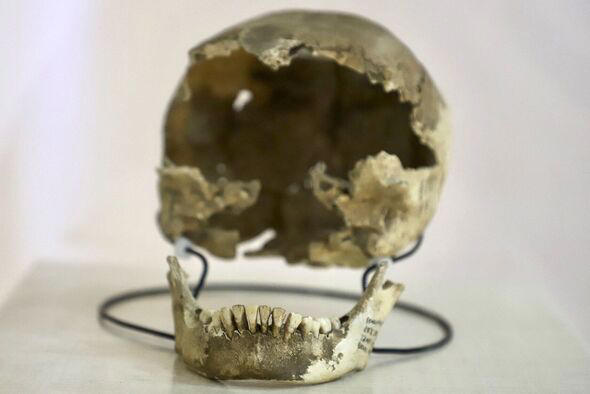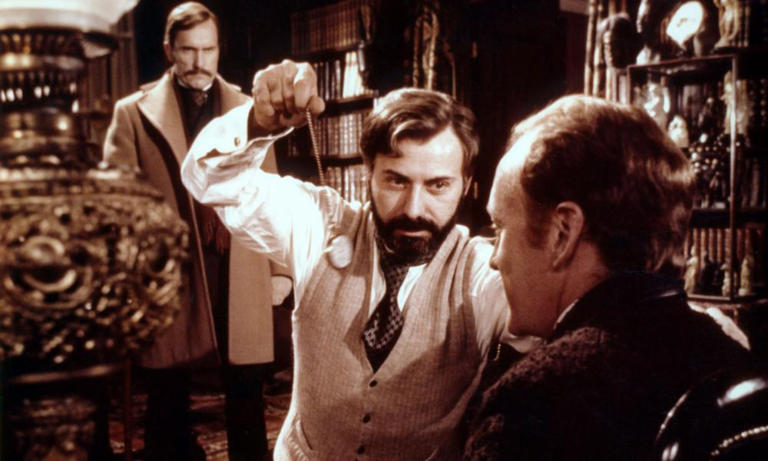DNA ANALYSIS SPANNING 9 GENERATIONS OF PEOPLE REVEALS MARRIAGE PRACTICES OF MYSTERIOUS WARRIOR CULTURE












DNA analysis spanning 9 generations of people reveals marriage practices of mysterious warrior culture
Hundreds of skeletons found in cemeteries on the Great Hungarian Plain reveal clues about nine generations of Avars, a mysterious warrior culture that dates back nearly 1,500 years. A new analysis of the remains suggests that men stayed put while women married into the culture and that it was common for people to have multiple partners.
In a study published Wednesday (April 24) in the journal Nature, an international team of researchers conducted DNA analysis on 424 skeletons located in four Avar cemeteries in present-day Hungary. Based on those results, the team identified 298 people who were closely biologically related, and they mapped out family trees across nearly three centuries.
The Avar people settled in the Carpathian Basin starting in the mid-sixth century. The political core of this group included a khagan, a political leader who was surrounded by elite horse-mounted warriors and their families. Originally nomadic, the Avars established stable settlements in the early seventh century and buried their dead in large cemeteries, sometimes in ostentatious tombs filled with weapons, jewelry and horses. Although the Avars controlled a large realm from approximately contemporary Hungary to Bulgaria, their rule ended around A.D. 800 after they were invaded by Charlemagne and his army.
The Avars left no written history, and their language is preserved only as occasional words in contemporaneous Latin and Greek texts. But half a dozen previous research studies in the past decade have attempted to determine the origins of the Avar people through their DNA, ultimately finding considerable genetic influences from European, Eurasian and Northeast Asian populations.
In the new study, the research team used software to calculate genetic relatedness from the DNA results. They found that most people were related to others in the same cemetery and that women's origins were more diverse than men's, suggesting that women married into the male-centered Avar culture. More specifically, women's parents were not found in the cemeteries, while men descended from the founding males of their family tree. Related individuals were almost always buried together.
"This suggests that Avar women left their homes to join their husbands' communities, which might have provided some social cohesion between distinct patrilineal clans," Lara Cassidy, a research assistant in the Department of Genetics at Trinity College Dublin who was not involved in the study, wrote in an accompanying News & Views article published in Nature.
The genetic analysis revealed that both men and women commonly had children with more than one partner. It also produced clear evidence for a practice called levirate, which is when closely related men have children with the same woman, often following the death of one of the men. The team found three pairs of fathers and sons, two pairs of brothers, and an uncle and nephew who each had shared a female partner.
"All the aforementioned phenomena lead us to assume that the segment of Avar society we investigated had a structure comparable to that of Eurasian pastoralist steppe people," particularly in terms of patrilineality or male-reckoned descent, the researchers wrote in their study.
By studying the specific lineages, or patrilines, the team also discovered that, in the large Rákóczifalva cemetery, there were shifts in genetics, food resources and grave types in the second half of the seventh century, suggesting a political transition as one patriline took power from another.
"This community replacement reflects both an archaeological and dietary shift that we discovered within the site itself, but also a large-scale archaeological transition that occurred throughout the Carpathian Basin," study co-first author Zsófia Rácz, an archaeologist at Eötvös Loránd University in Budapest, said in a statement.
Ultimately, the large-scale ancient-DNA analysis done in this study showcased the intricacies of Avar relationships, revealing that "the society maintained a detailed memory of its ancestry and knew who its biological relatives were over generations," co-first author Guido Alberto Gnecchi-Ruscone, an archaeogeneticist at the Max Planck Institute for Evolutionary Anthropology in Leipzig, Germany, said in the statement.
LOST CITIES HIDDEN FOR THOUSANDS OF YEARS DISCOVERED UNDER FOREST
















Lost cities hidden for thousands of years discovered under forest
Anetwork of huge cities, hidden by lush rainforest for thousands of years, has fundamentally changed our understanding of ancient Amazon civilisations.
The groundbreaking find in Upano, eastern Ecuador, has revealed the cities – home to tens or even hundreds of thousands of people – were connected by an incredible network of roads and canals.
French researchers, led by Professor Stephen Rostain, used a special laser technique known as LiDAR to reveal the breathtaking settlements. They are thought to be around 2,500 years old, existing around the same time as the Roman Empire and 1,000 years before any other known complex Amazonian society.
‘This is older than any other site we know in the Amazon,’ said Professor Rostain, from the National Centre for Scientific Research in France.
Speaking to the BBC, he added: ‘We have a Eurocentric view of civilisation, but this shows we have to change our idea about what is culture and civilisation.’
Co-author Dr Antoine Dorison added: ‘It changes the way we see Amazonian cultures. Most people picture small groups, probably naked, living in huts and clearing land – this shows ancient people lived in complicated urban societies.’
To conduct their research, the team flew over an area around 116 square miles, using the LiDAR to identify the remains of at least 15 settlements.
They found around 6,000 rectangular platforms arranged in groups of three to six, often around a plaza, in cities across the region. Most were around 20m by 10m, but some were much larger. Researchers believe they were a mix of homes and buildings used for ceremonial purposes
Unlike the Incas and Mayans, other complex Central and South American civilisations, people in the Amazon rainforest did not have stone to build from, meaning there are no remnants of the dwellings, only the platforms cut into hillsides.
However, more striking is the extensive network of roads and canals through the rainforest connecting the cities.
What is LiDAR?
LiDAR stands for light detection and ranging.
It is a remote sensing method that uses light in the form of a pulsed laser to measure varying distances to the Earth.
These light pulses – combined with other data recorded by the airborne system – generate precise, three-dimensional information about the shape of the Earth and its surface characteristics.
‘The road network is very sophisticated,’ said Dr Dorison. ‘It extends over a vast distance, everything is connected. And there are right angles, which is very impressive.’
The largest roads were 10m wide and stretched for up to 12 miles. They were also generally very straight, rather than following the terrain, requiring much more time, effort and engineering.
Dr Antoine added the roads may have had a ‘very powerful meaning’, possibly linked to their beliefs.
After identifying the cities from above, the team was then able to investigate them on the ground, unearthing pits and hearths in the platforms, and digging up items including jars.
Yet little is known yet about how the people lived, or how their societies worked – although the presence of ditches around some of the cities suggest there may have been conflict between groups.
The team believes the canal network allowed them to manage water and drain fields around the cities used for growing crops.
Another mystery yet to be solved is what happened to them. One cause may be the nearby volcano, which provided fertile soil for the people living in the area, but may have also forced them to leave the valley when it erupted.
The incredible find has not only changed what we know about human history in Central and South America, but also vindicated Professor Rostain’s entire career.
He said scientists warned him long ago that no ancient groups lived in the Amazon, but that did not stop him spending decades researching the region.
‘I’m very stubborn, so I did it anyway,’ he said. ‘Now I must admit I am quite happy to have made such a big discovery.
‘It was a valley of lost cities. It’s incredible.’
The study is published in the journal Science.
Story by Katherine Fidler: Metro
ARCHAEOLOGISTS CRACK MYSTERY OF ANCIENT MAYA AFTER 7,000-YEAR-OLD REMAINS FOUND













Archaeologists crack mystery of ancient Maya after 7,000-year-old remains found
The Maya have fascinated historians for centuries, a civilisation that lived as far back as 1800 BC.
Although they were encountered by the Spanish Conquistadors in the 1500s, American traveller and archaeologist John Lloyd Stephens is largely credited as the first Westerner who stumbled across their famous ruinous cities, discovering them during a journey between 1839 and 1842.
Today, descendants of the Maya still live in their former homelands across Central America but number nowhere as many as they once did during the peak of their empire - a figure that has been placed as 20 million strong.
Many of the sites at which they once lived have since been dug up and excavated all across the region, with a number of relics key to understanding their culture found.
One such find previously took place in the Tacotalpa municipality of Tabasco state in southern Mexico, where archaeologists stumbled upon a treasure trove of human remains thousands of years old.
Found inside the Puyil cave, researchers say the age of the bones places them in a period when humans shifted from being hunters to living a more sedentary lifestyle.
At least one of the remains was recorded as being 7,000 years old, while the others date back at least 4,000 years.
Archaeologist Alberto Martos, part of the team that excavated the site in 2018, said: "Seven thousand years old is what we've just placed it, which is the period of transition from being hunters to sedentarism.
"There were different groups during this time that used the caves, clearly it wasn't a domestic cave.
"In prehistoric times it was probably used for rituals and cemeteries, so as to dispose of remains of people.
"For the Maya, it was a cave of ancestors. This cave was used by the Maya, they respected the remains that were already there and left their own remains inside."
In essence, the remains enabled scientists to study and better understand what was happening at the time that the Maya civilisation traded hunting for a life of stability in cities and static dwellings.
There is more, however. The discovery of such skeletal remains also offers scientists vital information about things like dietary habits, which in turn provide snapshots about their way of life.
A few years after the discovery at Puyil cave, archaeologists analysed a set of teeth which once belonged to a high-ranking Maya chief called Ajpach' Waal.
Buried in Mexico some 1,300 years ago, Ajpach' Waal was born and raised in an elite family and enjoyed the finer things in life: good food, drink and easy access to luxury items of the time.
He grew up to become an ambassador in his community and negotiated an alliance between two major Mayan dynasties in 726 AD.
Yet, through his bones, researchers were able to piece together an altogether more bleak image of Ajpach' Waal's upbringing, both sides of his skull extremely spongy and porous indicating malnutrition in youth.
His right tibia, or shinbone, was at some point in his life fractured, likely the result of an injury during a contact sport.
Many of his teeth had been lost through gum disease, and a painful abscess was prominent in his mouth - not to mention the arthritis that was detected in the wearing and bending of his bones.
Writing in the journal, Latin American Antiquity, Kenichiro Tsukamoto, an assistant professor of anthropology at UC Riverside and lead author of the study, said: "The ruler of a subordinate dynasty decapitated Copán's king 10 years after his alliance with Calakmul, which was also defeated by a rival dynasty around the same time.
"We see the political and economic instability that followed both these events in the sparse burial and in one of the inlaid teeth."
Mr Tsukamoto added: "His life is not like we expected based on the hieroglyphics.
"Many people say that the elite enjoyed their lives, but the story is usually more complex.
LETTER: ALAN ARKIN OBITUARY















Letter: Alan Arkin obituary
Over lunch one day at Pinewood Studios in the mid-1970s – where he was playing Sigmund Freud in the all-star comedy-thriller The Seven-Per-Cent Solution – Alan Arkin told me, in that familiar nasal deadpan, he found acting “difficult. It makes me nervous and jumpy.” Directing instead was, for him, usually a “release”, especially in the theatre. However, he only ever directed two features, the first of which Little Murders (1971), was, for me, a neglected gem of violent urban decay.
“The night before I started, I walked around the block very fast saying the lines and found the only way I could get them out was by stammering and having fits of not being able to speak. By Christ, I thought, that’s the way to play it!”
NEW JERSEY REP. DONALD PAYNE JR. DEAD AT 65


















New Jersey Rep. Donald Payne Jr. dead at 65
- New Jersey Democrat Rep. Donald Payne suffered a heart attack on April 6
- He has been receiving treatment at Newark Beth Israel Medical Center
- Since his cardiac event, Payne has been unconscious and he remains intubated
Payne suffered a heart attack on April 6 and since then was in a coma intubated at the Newark Beth Israel Medical Center, according to the New Jersey Globe.
He had struggled with health issues in the past such as diabetes and liver problems.
Previously, his office had mentioned that Payne was on the mend after suffering a heart attack in early April.
A spokesperson for his office said in an April 17 statement, 'Congressman Donald M. Payne, Jr. suffered a cardiac episode based on complications from his diabetes last week.'
The statement continued that Payne was 'in stable condition at a local hospital and continues to be under doctor’s care.'
New Jersey Gov. Phil Murphy posted on X that he and his wife 'are deeply saddened by the tragic passing of our friend, and a steadfast champion for the people of New Jersey, Congressman Donald Payne, Jr.'
'Our heartfelt prayers are with his family during this difficult time.'
Articles - Latest
- DNA ANALYSIS SPANNING 9 GENERATIONS OF PEOPLE REVEALS MARRIAGE PRACTICES OF MYSTERIOUS WARRIOR CULTURE
- LOST CITIES HIDDEN FOR THOUSANDS OF YEARS DISCOVERED UNDER FOREST
- LETTER: ALAN ARKIN OBITUARY
- ARCHAEOLOGISTS CRACK MYSTERY OF ANCIENT MAYA AFTER 7,000-YEAR-OLD REMAINS FOUND
- NEW JERSEY REP. DONALD PAYNE JR. DEAD AT 65
- WORLD'S TALLEST WOMAN' MARIA FELICIANA DOS SANTOS, 7FT3, DIES AGED 77
- UNDERWORLD DISCOVERY CHALLENGES OUR UNDERSTANDING OF HUMAN EVOLUTION
- MUSLIM SOLDIER MEMORIAL FUND £1 MILLION TO IMPROVE RELATIONS AFTER ISLAMOPHOBIA ISSUES
- SCIENTISTS DISCOVER 1ST-OF-ITS-KIND CELL PART BORN FROM A SWALLOWED MICROBE
- NYC TIKTOK STAR EVA EVANS DIES AGED 29
- LADY GARDNER OF PARKES, CONSERVATIVE PEER WHO CHAMPIONED WOMEN’S RIGHTS IN THE EU AND UN – OBITUARY
- WEBB TELESCOPE DETECTS LIGHT FROM AN EARTH-LIKE PLANET
- FORMER LABOUR MINISTER AND CROSSBENCH PEER FRANK FIELD DIES AGED 81
- LOURDES PORTILLO DEAD AT 80:OSCAR-NOMINATED FILM DIRECTOR HAS PASSED AWAY
- VAMPIRE' NEUTRON STAR BLASTS ARE RELATED TO JETS TRAVELING AT NEAR-LIGHT SPEEDS
- THE MOON IS 40 MILLION YEARS OLDER — EXPLAINED
- BARBARA O.JONES DEAD AT 82: ACTRESS WHO STARRED ALONGSIDE MUHAMMAD ALI IN TV SERIES, HAS PASSED AWAY
- SIR CHIPS KESWICK, SCION OF THE JARDINE MATHESON DYNASTY WHO CHAIRED HAMBROS AND ARSENAL – OBITUARY
- NORMAN JEWISON OBITUARY
- TED TOLEMAN OBITUARY
- NASA FINDS MUTANT BACTERIA ON ISS THAT DOESN'T EXIST ON EARTH
- KENYA’S MILITARY CHIEF DIES IN HELICOPTER CRASH
- TERRY ANDERSON, US JOURNALIST HELD HOSTAGE NEARLY 7 YEARS IN LEBANON, DEAD AT 76
Articles - Most Read
- Main
- Contact Us
- The science behind Ouija boards
- Cosmic Consciousness - What is Cosmic Consciousness-2
- Cosmic Consciousness-Introduction
- Cosmic Consciousness - Introduction-2
- MASSIVE 6.1 MAGNITUDE EARTHQUAKE HITS NEW ZEALAND AS NATION STILL REELING FROM CYCLONE
- ARCHAEOLOGISTS UNRAVEL THE TRUTH OF APHRODITE, GODDESS OF LOVE, ON VALENTINE'S DAY
- The Human Condition-Thomas Keating
- Cosmic Consciousness First Words - 1V - 2
- Cosmic Consciousness First Words - V -
- Cosmic Consciousness V - 2
- Cosmic consciousness - First Words - IV
- Cosmic Consciousness - What is Cosmic Consciousness?
- Evolution and Devolution-Chapter 2
- The Human Condition - Thomas keating-3
- The Human Condition-2-Thomas Keating
- Drinking From The Mountain Stream - Milarepa
- Cosmic Consciousness-On the Plane of Self Consciousness
- The Human Condition - 4
- Cosmic Consciousness - 3 - On the Plane of Self Consciousness
- Evolution and Devolution-Chapter 1
- The Human Condition - 6
- Shakyamuni Buddha or India the 1st “Black Revolutionary Hero.”
- On the Plane of Self Consciousness - 2
- Milarepa's World
- The Human Condition - 5
- Milarepa's World-2
- The Buddhist System of Liberation
- Contemplation and the Divine Therapy - 2
- On the Plane of Self Consciousness IV
- The Buddhist System of Liberation - 2
- JERRY RAWLINGS, GHANAIAN STRONG MAN WHO CAME TO POWER IN A COUP BUT INTRODUCED DEMOCRACY – OBITUARY
- On the Plane of Self Consciousness IV - 2



